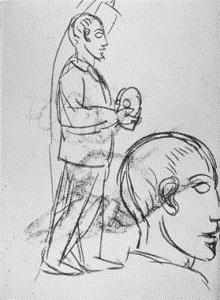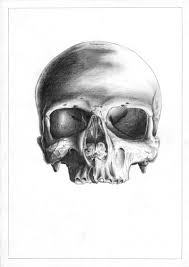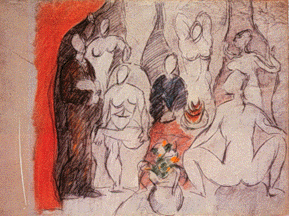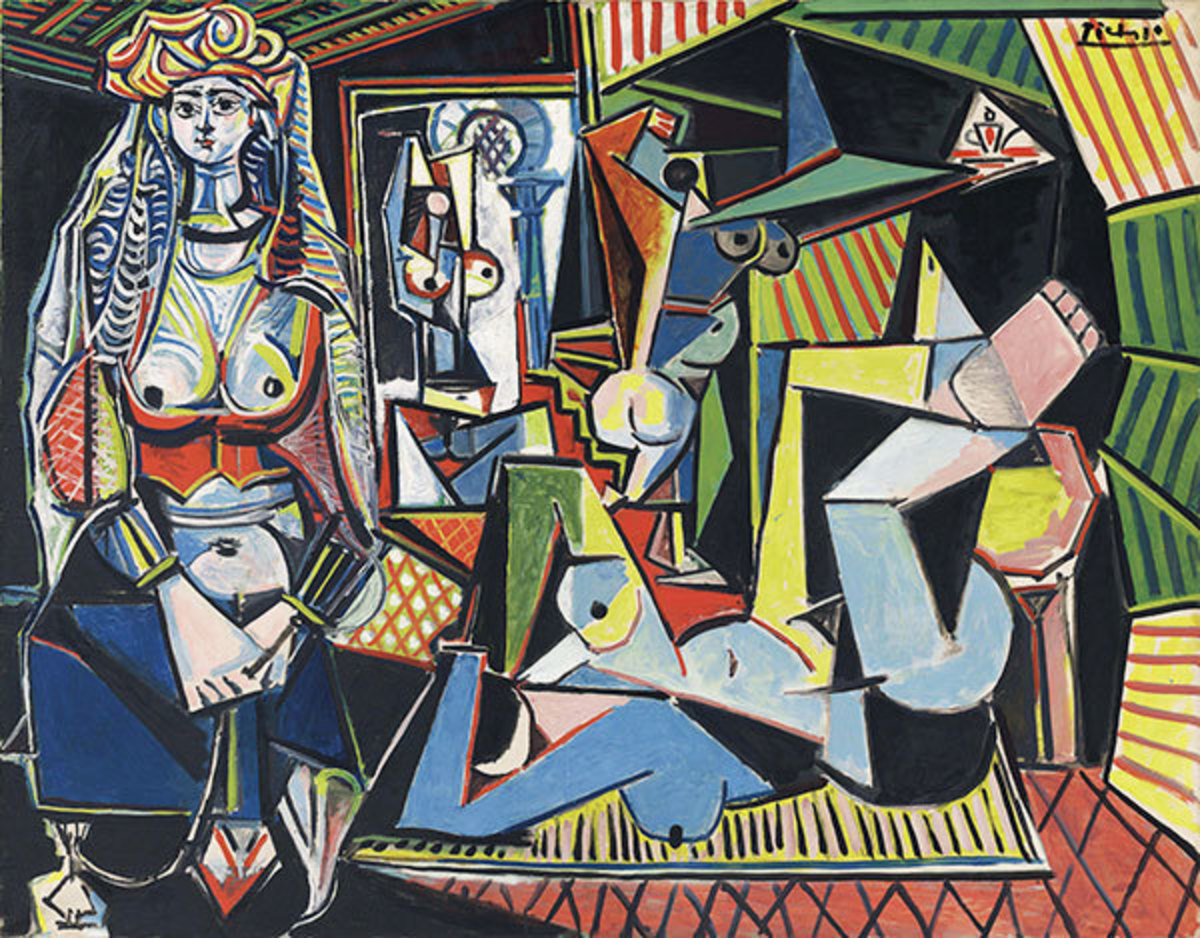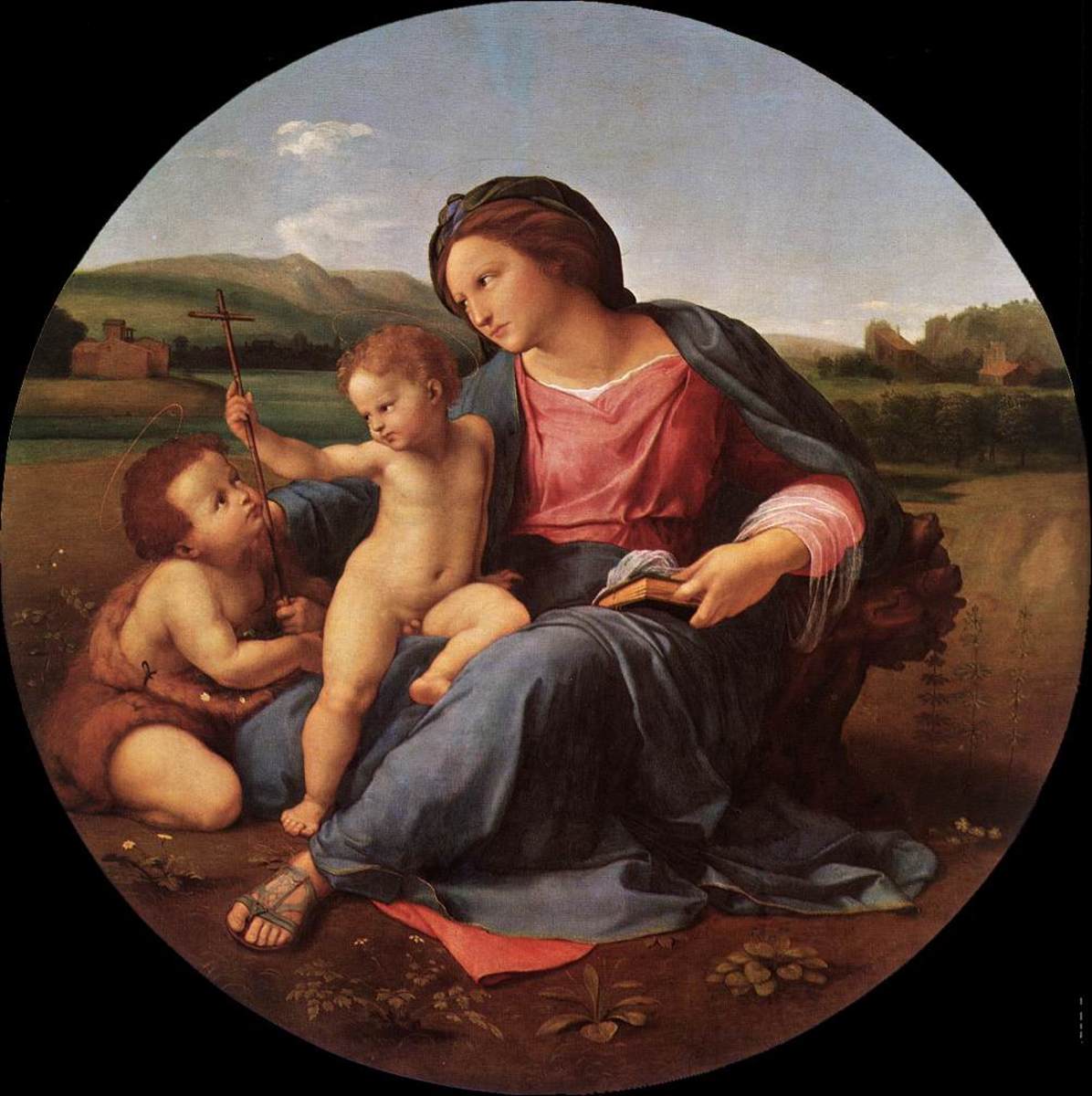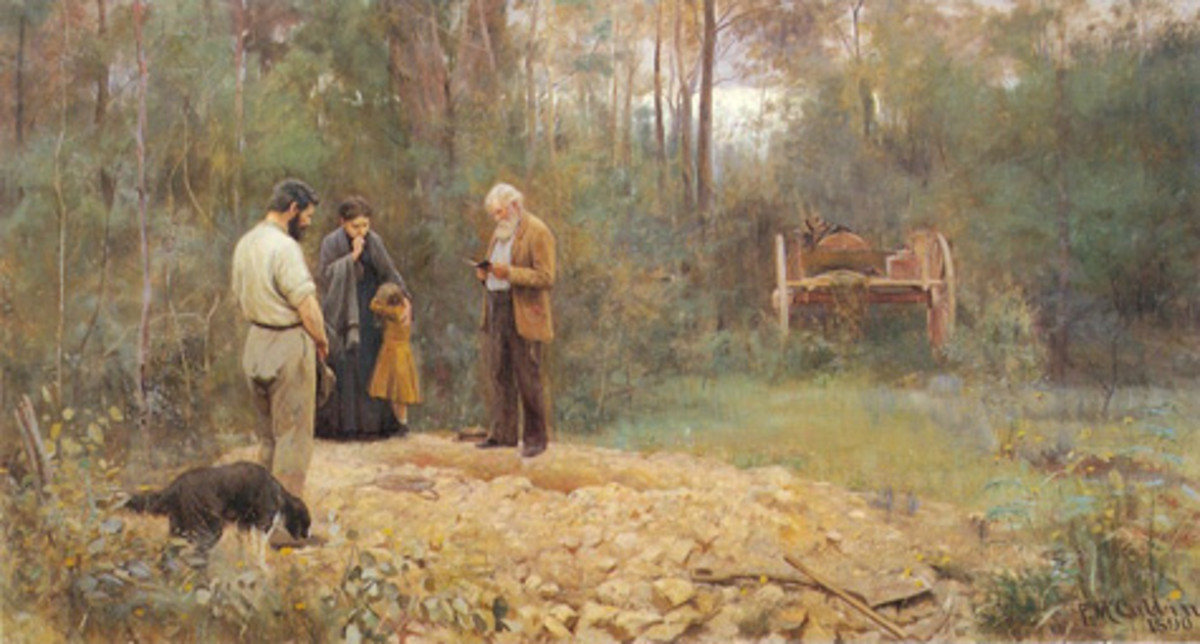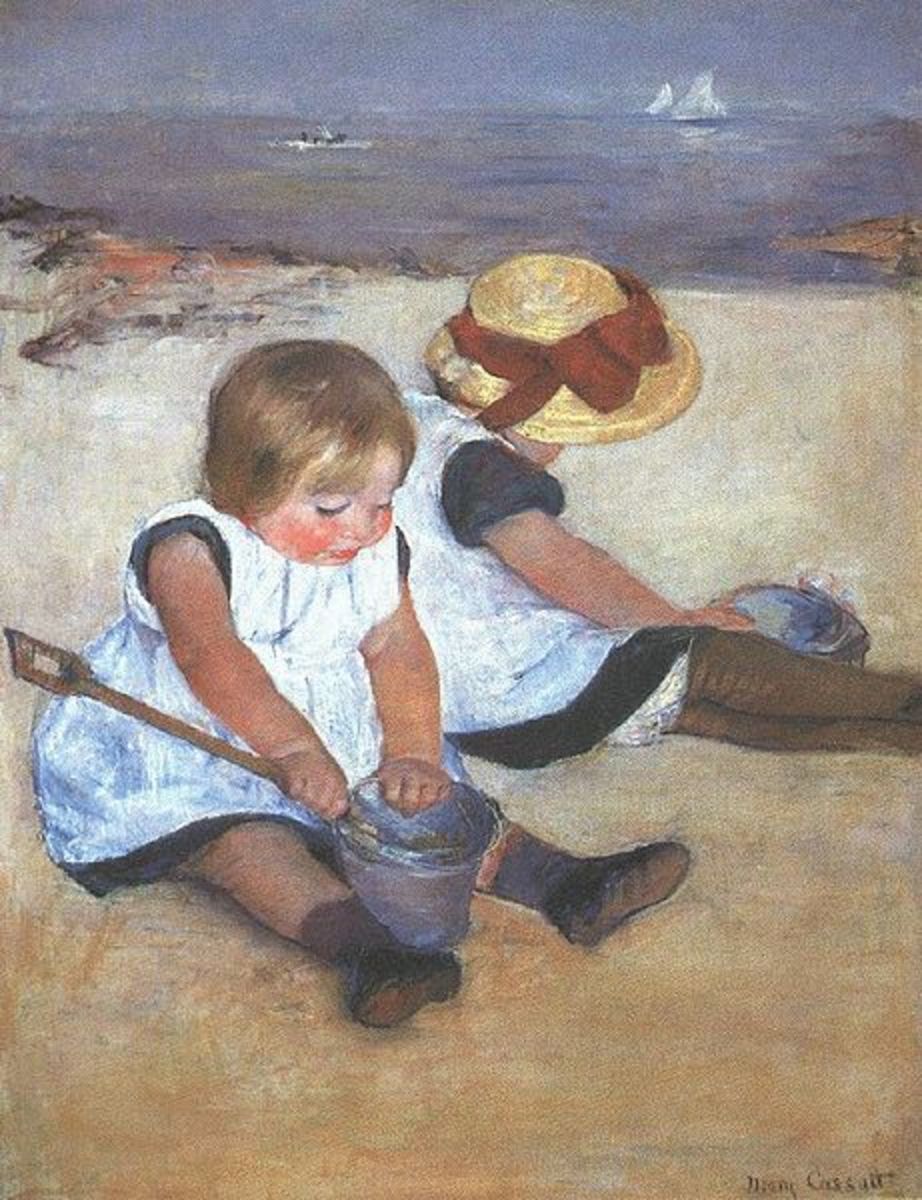Of Sailors, Scholars, Skulls and Strumpets
The Women of Avignon

A few observations about symbolism
My experience and exposure to Picasso’s famous painting of Les Demoiselles d’Avignon, that revolutionary introduction to cubism from 1907, had only been censorious in comparison to Leo Steinberg’s magnum opus of analysis. (First appeared in the Wilson Quarterly) Of course, I have had the standard exposure that any undergraduate majoring in Art History and further studies in pursuit of a Master’s degree would entail. The sheer volume of thought on the development of one painting is remarkable, and the famous review by Leo Steinberg reflects excellent scholarship. The review is divided between the preparatory drawings for the work that were somewhat experimental, and the finished painting as a type of final product. When Steinberg wrote about it, sixty-five years had elapsed, and he believed that it was time to review the painting once again from a newer perspective with perhaps a new set of questions that would be something more than a descriptive confirmation as: “the first Cubist painting”.
Originally intended as a type of Philosophical Brothel in preparatory drawings, Picasso was creating a stylistic shift. It was, in a way, a triumph of form, and he chides us into thinking in the early drawings that at one time it concerned an allegory or charade on the wages of sin. It is from this point that I would like to take a fresh look since the period of Steinberg’s study, due to the possibility that a few symbolic elements present in those stages may not have been fully understood, or completely overlooked.
The painting is an epiphany. It now bears a theme of the sudden or dramatic entrance, but the final result was different from the initial idea, in that it originally contained male clients among the figures. Picasso’s drawings show us that he intended to include a sailor seated at a table, and a scholar (medical student), entering the scene with a skull in his hand. This may have been intended as a memento moiré`, that in of itself, would have made this work even more fascinating. Picasso may have intended as many as three male figures, all somewhat of a caricature or reflection of himself. The painting went through many changes. I cannot personally say that I like the final result compared to the initial drawings because the perspective now relates to the person looking at the painting. It projects you into the parlor as if you were a customer, and the women move toward you like animals in a zoo expecting to be fed. The aggressive postures are garish. None of them seem to be in rapport. Of course, this painting owes some ideas to Cezanne’s Joy of Life, a bit of Venus, and other art displays that eventually led to the bizarre Iberian and African masks.
But my intention here is to take a new direction. I would like to propose that the drawings that led to this painting are more than meets the eye. We cannot know if Picasso intended what I am going to relate, but it is fascinating. It first concerns the male figures that were eventually discarded. Our Sailor was a symbol of the experienced man of the world, seated at a table that bore the fruits of passion. If lust was on that Sailor’s mind, then the fruits on the table act as a vehicle for that idea. They are also somewhat symbolic of the fall of man and contributory to the final result. Next and perhaps the most prominent, was a medical student or scholar carrying a skull (and in early designs, a book). There was some expression by observers that this could be interpreted as a type of everyman. I use the term “scholar” rather loosely here, because by true definition a scholar is someone with advanced knowledge in the field of the humanities. A medical student on the other hand is a specialist in science and is more relevant to an advanced skill than scholarship. It has been theorized by many that this was another aspect of Picasso. It also has been described as symbolically associated with an analysis by the medical student from an anatomical perspective. This is all possible, but it is the presence of that skull that intrigued me.
Upon careful examination of certain drawings, the skull held by the medical student is not a full skull as we see in a lot of theatrical productions. It is a half-skull, missing the portion of the lower jaw. This then would not be an evocation of death and would call into question the idea of the student as bearing virtue or inexperience. Why?
The art history scholar should consider the importance of that half skull in the period when this painting broke upon the world. In that period, the half-skull was an emblem of bawds, rakes, sexual adventurers and prostitutes. It was fashionable in those days to wear silver rings with a half-skull motif. This advertised their station in life and could be turned to appear like an ordinary silver ring when a person was in polite company. The possibility of this idea now changes the whole image of the “innocent” student coming to the brothel to lose his virtue!
So what can be implied from this? Well it could represent an evil influence or symbol of possession that is leading the student into a world of sin. Even more fascinating, the skull could be viewed as a type of key unlocking the entrance to the world of vice, a three-dimensional identification card, held by the bearer to reveal his true nature as a sexual adventurer. So, the idea that a skull is something inappropriate to bring to a brothel, as suggested, may not be correct. It is also not an object of scientific inquiry or an inference of knowledge.
I agree with Steinberg in that this painting most likely was not a charade but an allegory of the involved and the uninvolved in confrontation with the indestructible claims of sex. In this, the skull would have had a better bearing toward the overall concept. However, the finished canvas of having observers directly involved without the mail figures in the painting, transfers the question to everyone who gazes upon it. In this manner, the observer must deal with a question of conscience. “Is this what you would enjoy?” or “Is this you’re hidden vice?” The women stare at you with their eyes, and they are eyes in expectation of satisfaction with a look of desire. The painting is linked with his former work: Two women from 1906. In this, we have a precursor to what lies beyond the curtain. The stylistic Picasso face, void of expression, seems about to introduce another woman to a world unseen.
The next bit of curiosity to my examining eye concerning Les Demoiselles d’ Avignon would be the decision to add the Iberian and African masks. The explanation is that it was an attempt to make the Strumpets appear as depersonalized, primitive, and barbaric. Now, I cannot probe the mind of Picasso to discover what he really knew about the use of African tribal masks. The general idea is that he was impressed by them at the time he was working on this painting due to a display at another gallery that he had visited. But there is a significant problem here with their inclusion in the painting. In African culture, only men wore masks! They were for conducting ceremonies by the elders of the tribe. The ritual included dance and was said to change the personality of the bearer. The elder became what the mask symbolized. The implication here, being that by placing the masks on women, it symbolically leaves us with a question as to their sexual identity. One cannot help but wonder whether this distortion was intentional and perhaps a transposition due to the removal of male figures from the final result. It ultimately leaves us with a question that must be borne by the viewer. Do the masks bring thoughts about the ambiguous nature of sexual identity and preferences? Their aggressive stances, I submit, present us with a possibility that this was perhaps intentional by the hand of Picasso, and may be a rather large oversight by previous reviewers. Yes, it is only a theory, but the possibilities that I have addressed have symbolic significance with the historical past. I hope I have opened up some new consideration regarding this remarkable piece of work. No doubt, other scholars will venture their opinion. I just hope they are not carrying a half skull when they enter the boudoir of the Humanities.
